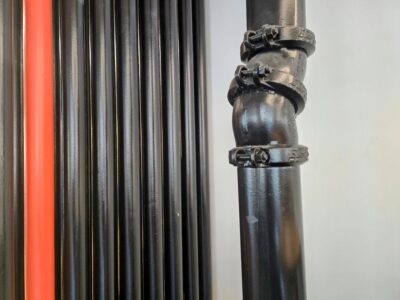Student loan debt forgiveness was a pillar of President Joe Biden’s campaign in 2020, and on Wednesday, he announced that those with federal student debt can be forgiven up to $20,000 — $10,000 for anyone making under $125,000 a year and an additional $10,000 for students who received Pell Grants while in school.
All federal student loans are slated to be eligible for forgiveness, including the Pell Grant program, the William D. Ford Federal Direct Loan Program, the Federal Perkins Loan Program and the Federal Family Education Loan Program. Grad and Parent PLUS loans are also eligible, as are federal loans owned by private companies.
Income-based repayment plans will also change so that borrowers pay no more than 5% of their discretionary income on undergraduate loans, down from 10%, along with some other adjustments. In addition, Biden again pushed back the student loan repayment pause to Dec. 31, a move he’s doing for the last time, he said Wednesday.
Why is Biden introducing student debt forgiveness?
In a White House press conference, Biden spoke to the change. The cost of college has tripled in the last 40 years, and in order to keep up with other nations with education systems that are out-performing ours, the government should ease the financial burden of higher education, he said. He noted his local ties, and an education at University of Delaware, where tuition has skyrocketed — like most universities in the years since he attended.
Of the 43 million people with federal student loans, 27 million of those will get $20,000 forgiven, according to Biden, and 45% will have debt fully canceled by this move. He released a preliminary website with information about how the loans will be forgiven, but said a form for an application will come in the next few weeks.
Following the announcement, critics quickly commented on the possibility of student debt forgiveness boosting inflation amid a period of already-high increases. More money flowing could mean more demand, and higher prices for goods. (Remember that Inflation Reduction Act?) Biden said he expects $50 billion to come back into the economy in the coming months, with many millennials having more spending power than they’d ever had.
“It’s about opportunity,” Biden said Wednesday. “It’s about giving people a fair shot.”
What does the debt forgiveness plan mean to borrowers?
The announcement was met with gratitude by some borrowers, especially those who will receive the extra $10,000 in forgiveness. Pell Grants are usually awarded to students who exhibit exceptional financial need, and will affect Black borrowers at the highest levels.
72% of black grads were Pell Grant recipients compared with 36% of Asian grads and 34% of white grads. Adding that was really to target black borrowers with additional loan forgiveness.
— Unobtainium Daydreams (@ShimminyKricket) August 24, 2022
because I received the Pell Grant when applying for student aid in high school, i'm elligible for Biden's $20k debt cancellation which would wipe out all of my crippling debt. I wish the cancellation amount was higher but I can say that I'm feeling god damn incredible right now
— manny (@mannyfidel) August 24, 2022
But for others, including those who are saddled with huge amounts of debt, the move will hardly put a dent in their total owed. One Twitter user said the the $10,000 represents less than 10% of their total debt, and interest will keep the total going up over the next few years.
Nope. Just under 10% of my total debt (104K) and will be back in interest in just a couple of years (roughly 5-7% interest on loans). Doesn’t feel like it really changes anything tbh
— Marveaux (@marsattacks33) August 24, 2022
One local product manager said he’s glad for the people this forgiveness will be helping, and that the move is a step forward — but it’s “insufficient.” It echos many critics who say $10,000 isn’t enough to make the kind of financial impact the Biden administration was hoping for.
With the interest rates on federal loans, this level of forgiveness will do basically nothing. But the policy decision to turn loans back on and also to leave interest rates as they are will tank our ability to put away any savings each month. 🙃🙃🙃
— Chris Nemarich (@chris_nemarich) August 24, 2022
The DC-based managing director of GET Cities, Ayanna Smith, wrote in Technical.ly’s public Slack that she feels the salary cap on the program isn’t fair, and leaves some middle class people out. There are lots of people making above $125,000 that still struggle with the burden of their student loans, she said.
“Make too much for these types of programs but not enough to afford certain things,” she said.
Colin Dean, a Pittsburgh-based software engineer, wrote that the program is doing “something” to alleviate loans, but he’d prefer to see all debt forgiven. Dean graduated in 2007 with about $18,000 in loans, he said, but the average debt coming out of the private liberal arts college he attended in Western Pennsylvania was a lot more.
“I’ve got some friends who are two lawyers with [hundreds of thousands] of dollars in debt between them and high salaries, yet, so much of their combined income goes straight to student loans that they’d still be in trouble and be more of a normal case if you simply lopped a zero off the end of their income and their debt,” he said.
Look for more info in the next few weeks about how to apply for the debt forgiveness program.
Join the conversation!
Find news, events, jobs and people who share your interests on Technical.ly's open community Slack

Delaware daily roundup: Over 4,000 Black-owned businesses uncovered; Dover makes rising cities list; a push for online sports betting

Delaware daily roundup: Ladybug Fest illuminates small biz; Hahnemann Hospital's biotech future; intl. politics and a Middletown project

Philly daily roundup: Jason Bannon leaves Ben Franklin; $26M for narcolepsy treatment; Philly Tech Calendar turns one


